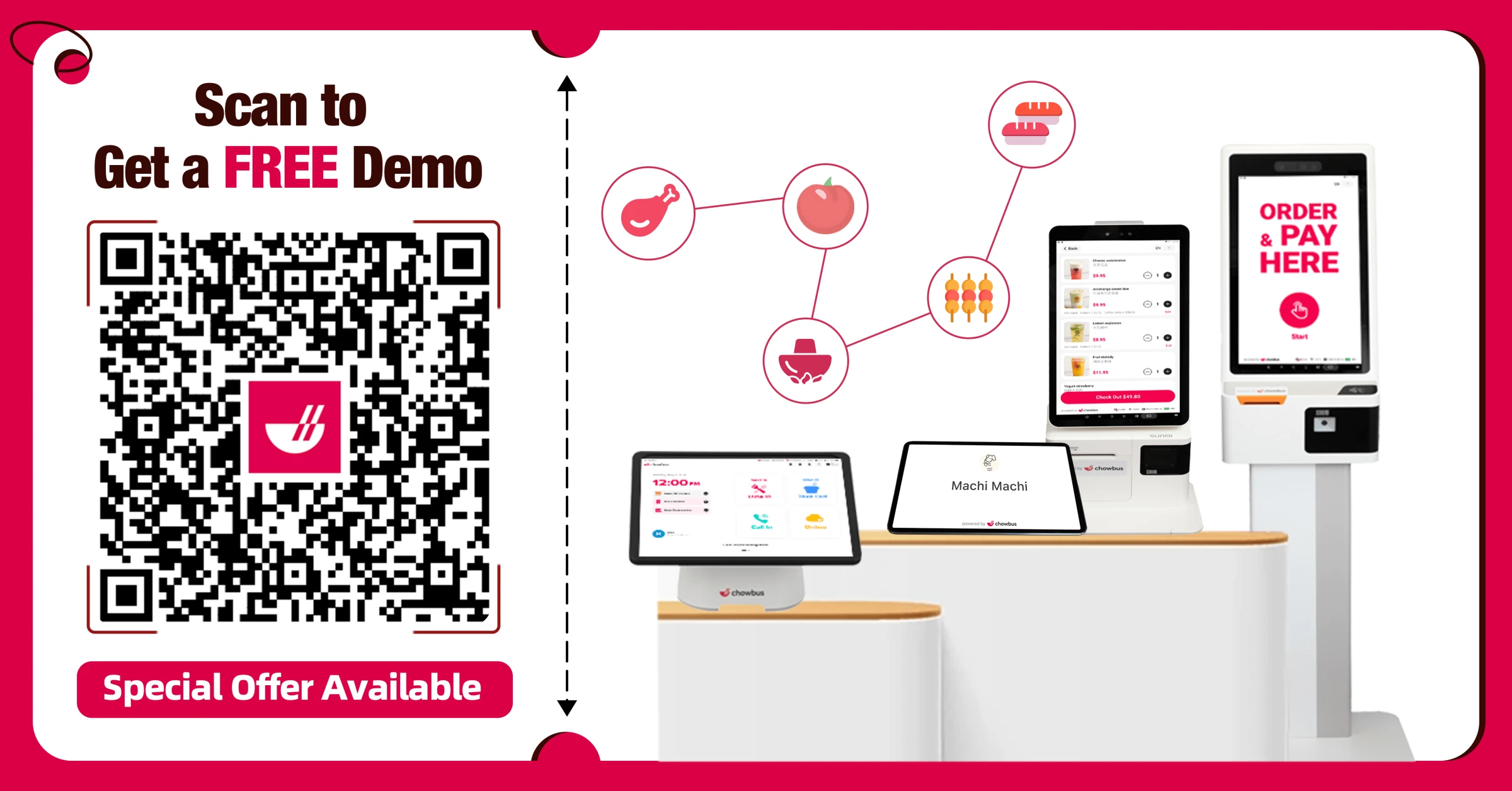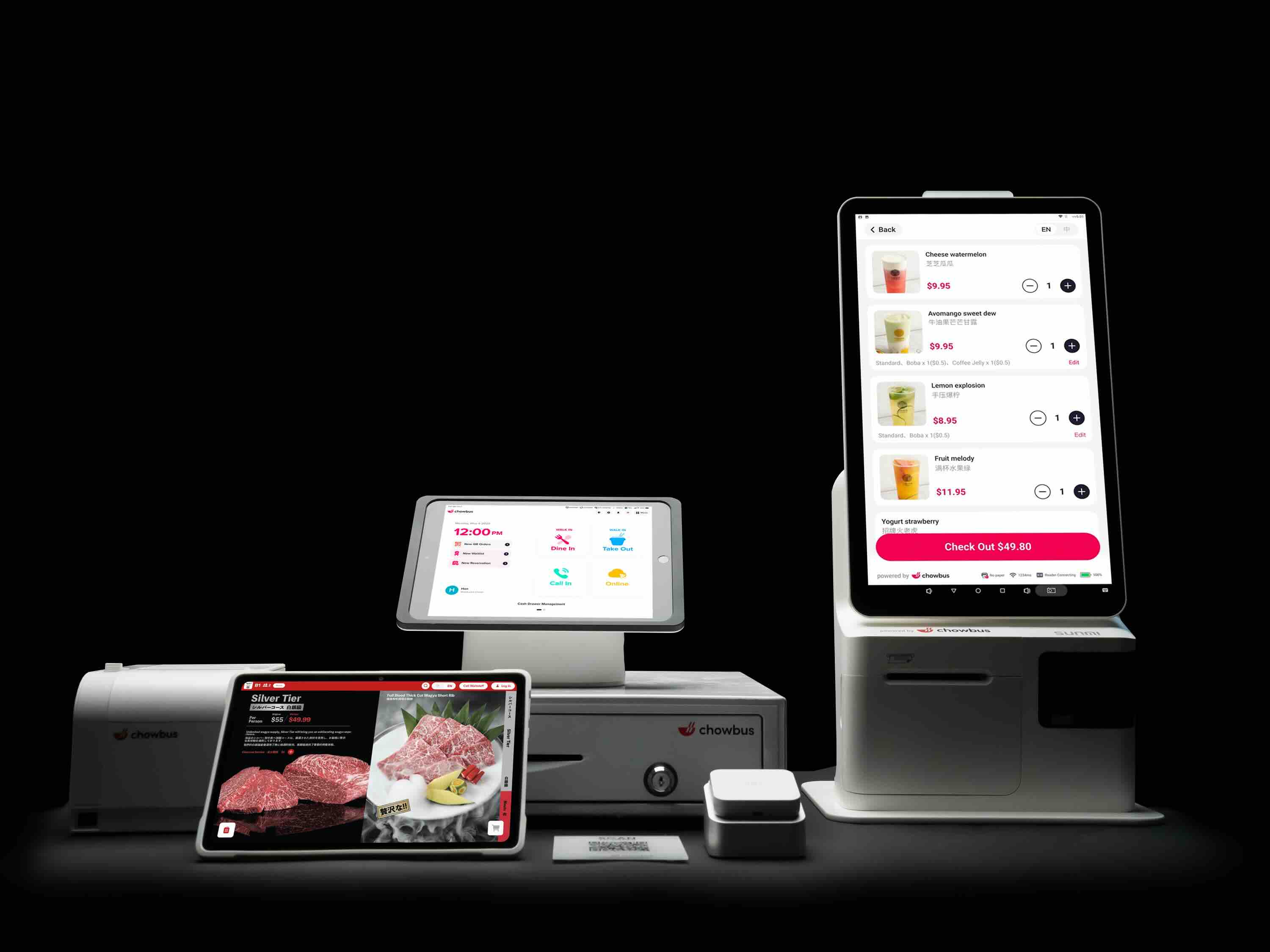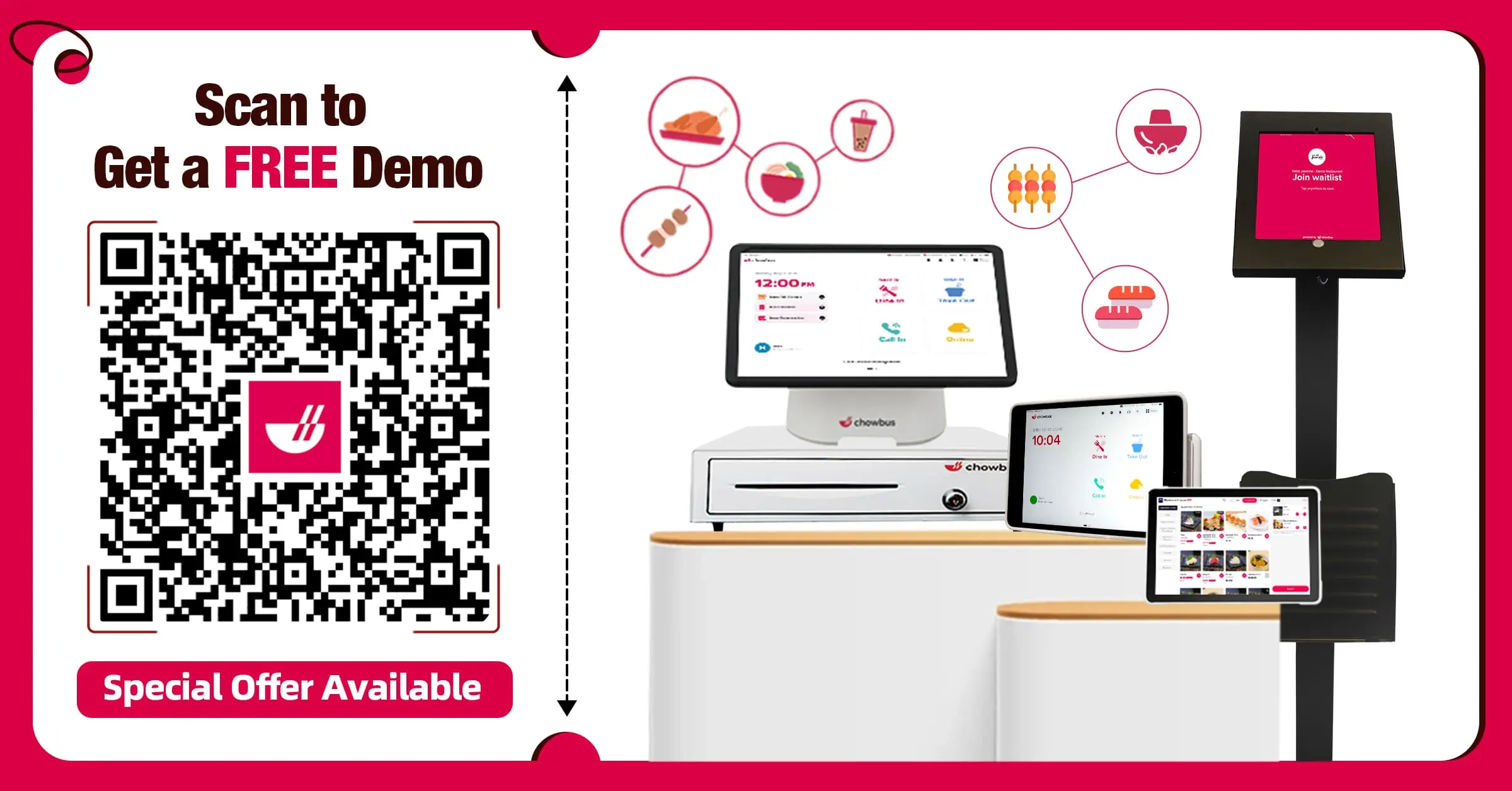Why Every Modern Food Court Needs a Food Court Kiosk

The restaurant industry is shifting, and food courts are no exception. Customers today expect faster service, easy ordering, and contactless payment options. That’s why food court kiosks are gaining traction in shopping malls, airports, and other high-traffic locations.
Recent forecasts show the global self-service kiosk market growing from around USD 12.79 billion in 2025 to approximately USD 25.65 billion by 2037, with a CAGR exceeding 5.5%. This surge reflects rising demand for automated ordering and touch-free payment technology—trends that help businesses increase revenue, improve customer satisfaction, and trim operational costs.
In this blog, we’ll explore:
What a food court kiosk is and how it works
The benefits of self-ordering kiosks in food courts
Why mall owners, food court managers, and QSR franchises should invest in kiosks
How to successfully implement a kiosk food court strategy
A well-placed kiosk can change how orders are placed, processed, and fulfilled. Let’s explore how this technology can work for you.

What is a Food Court Kiosk?
A food court kiosk is a self-service system that lets customers browse menus, customize their orders, and pay without staff assistance. Touchscreens guide users through the process, making ordering faster and reducing wait times.
These kiosks integrate with kitchen operations, ensuring accurate orders and minimizing miscommunication. They also support various payment methods, including credit cards, mobile wallets, and loyalty programs.
Self-ordering kiosks are common in shopping malls, airports, stadiums, and entertainment centers, where foot traffic is high and quick service is essential. Customers can place orders efficiently, reducing long lines and easing pressure on staff.
In quick-service environments, kiosks help manage peak hours by handling more transactions at once. They allow guests to order at their own pace while increasing efficiency for vendors. By offering a streamlined experience, kiosks create a more convenient and modern way to serve customers.
Benefits of Using a Food Court Kiosk
A food court kiosk does more than speed up orders—it improves accuracy, reduces costs, and increases revenue. Here’s how it can make operations smoother and more profitable.
1. Faster Order Processing
Long lines can frustrate customers and drive them away. A self-service kiosk moves orders along quickly, reducing wait times and increasing table turnover. With multiple ordering points, guests place their orders without delays, keeping the flow efficient.
2. Increased Order Accuracy
Miscommunication at the counter leads to incorrect orders, refunds, and unhappy customers. A kiosk removes the guesswork by allowing guests to select and confirm their choices themselves. Customization options ensure every order is correct before reaching the kitchen.
3. Lower Labor Costs
Hiring and retaining staff is expensive. Kiosks take on repetitive tasks like order-taking and payment processing, freeing employees to focus on food preparation and customer service. This reduces labor costs without sacrificing service quality.
4. Higher Sales & Upselling Opportunities
A digital menu does more than display items—it actively encourages guests to explore additional options. High-quality images and automated prompts suggest add-ons, combos, and upgrades, increasing average order value. Guests often spend more when they control the ordering process.
5. Improved Hygiene & Safety
Less physical interaction between guests and staff means fewer shared touchpoints. Contactless payments and digital menus help create a cleaner, safer dining experience, which many customers now expect.
A kiosk food court setup isn’t just about convenience—it’s a practical way to enhance service, reduce costs, and boost revenue.
Why Food Court Managers and Mall Owners Should Invest in Kiosks
Investing in food court kiosks isn't just about keeping up with technology—it's about taking a proactive step to enhance operational efficiency and customer satisfaction. Let’s break down why they make a smart investment for your business.
Streamline Operations
Kiosks help manage high traffic effectively, ensuring orders are processed quickly and accurately. This not only speeds up service but also reduces the strain on your staff during peak hours. Efficient operations mean customers spend less time waiting and more time enjoying their meals, which translates to a smoother overall experience.
Reduce Congestion
With kiosks handling orders, your counters become less crowded. This setup improves the flow within the food court and makes the environment more pleasant for shoppers. A relaxed customer is more likely to return, enhancing overall satisfaction and loyalty.
Boost Customer Satisfaction
Customers appreciate having control over their ordering process. Kiosks offer the convenience of browsing the menu at their own pace and customizing orders without feeling rushed. This autonomy often leads to a more personalized experience and increases the likelihood of repeat visits.
Attract More Visitors
For mall owners, kiosks serve as a modern amenity that can draw a crowd. They signal to potential tenants and shoppers that your mall values customer convenience and technological advancements. By providing a high-tech, efficient dining option, you enhance the appeal of your food court and contribute to the mall’s reputation as a forward-thinking destination.
Enhance Tenant Satisfaction
Modernizing your food court with kiosks can lead to happier tenants. With improved order efficiency and customer flow, tenants can handle higher business volumes with the same or even fewer resources. Happier tenants mean a more stable tenant base and potentially more favorable lease agreements.
Modernize the Food Court Experience
Adopting kiosk technology reflects a commitment to keeping your food court modern and responsive to current consumer preferences. It shows that you're willing to invest in solutions that elevate the dining experience, keep your setup current, and ensure that your food court remains a competitive option for both customers and vendors.
By incorporating kiosks, you invest not just in technology but in a strategy that enhances every aspect of the food court experience, from operational efficiency to customer and tenant satisfaction. This move can set your food court apart as an innovative and customer-focused destination.

How Quick Service Restaurants (QSRs) and Franchises Benefit from a Food Court Kiosk
For QSRs and franchises operating in busy environments, food court kiosks present several compelling advantages. Let's explore how these self-service stations are making operations smoother and more profitable.
Streamline High-Volume Orders
During peak hours, your staff can feel overwhelmed with the flood of orders. Food court kiosks manage this by distributing the ordering process among customers themselves. This not only speeds up service but also allows your team to focus more on food preparation and customer service, rather than taking orders.
Maintain Brand Consistency
Franchises, in particular, benefit from the uniformity that kiosks provide. You can program kiosks to display your brand's menu, promotions, and unique offerings consistently across multiple locations. This ensures that your brand identity remains intact, no matter where your kiosk stands.
Increase Revenue Per Transaction
Kiosks don't just take orders—they're excellent sales tools. With vibrant displays and interactive menus, kiosks can suggest add-ons, highlight promotions, and encourage upgrades. Customers often find themselves spending more than they would have with a traditional cashier, simply because the digital prompts are hard to resist.
Adapt to Local Preferences
Even within a franchise, local preferences can vary dramatically. Kiosks allow you to quickly adjust menus and promotions to cater to local tastes without disrupting your overall brand's offerings. This flexibility can lead to higher customer satisfaction and repeat visits.
In essence, food court kiosks help QSRs and franchises operate more efficiently, preserve brand integrity, boost sales, and adapt to local market demands—all while enhancing the overall customer experience.
Implementing a Kiosk Food Court Strategy
Implementing kiosks involves thoughtful planning and strategic decision-making to enhance both customer experience and operational efficiency. Let's explore how you can integrate these systems smoothly into your food court.
Steps to Integrate Food Court Kiosks
Evaluate Your Space - First, assess your current layout. Identify high-traffic areas where kiosks will be most accessible without causing congestion. Consider user flow and ensure that kiosk placement helps rather than hinders movement.
Plan for Infrastructure - Check for necessary electrical and internet access points. Kiosks require power and a stable internet connection to operate effectively. Ensuring these are in place before installation can prevent disruptions.
Focus on User Experience - Position kiosks to be user-friendly and ADA compliant. They should be accessible to all your visitors, including those with disabilities. The interface should be intuitive, making it easy for first-time users to place orders without confusion.
Choosing the Right Kiosk Provider
Compatibility and Integration - Choose a provider that offers a fully integrated system designed for multi-vendor food courts. A seamless connection between self-ordering kiosks and the POS system ensures smooth operations, real-time transaction tracking, and effortless payment processing—eliminating compatibility issues and simplifying management across multiple vendors.
Support and Training - Choose a vendor that offers comprehensive support and training. Your staff should feel confident using the kiosk system, and ongoing technical support is crucial for resolving any issues quickly.
Customization Options - Your kiosks should reflect your brand. Look for providers that offer customizable options for the user interface, including logos, colors, and menu presentations.
Payment Options
Diverse Payment Solutions - Ensure the kiosk can handle a variety of payment methods, including credit cards, debit cards, nfc mobile payments, and contactless options. This flexibility is key to accommodating your customers' preferences.
Security Features - Security is paramount. Choose kiosks that offer encrypted transactions and comply with the latest payment card industry standards to protect your customers' data.
By following these guidelines, you can ensure your food court remains a preferred dining option that meets modern consumer expectations.
Conclusion
Food court kiosks offer a clear path to improving service speed, order accuracy, and customer satisfaction while reducing operational friction. By automating ordering and payment processes, these systems address modern expectations for convenience and efficiency, creating a smoother experience for both visitors and staff.
The integration of a kiosk food court setup not only aligns with current food court trends but also positions your space as a forward-thinking destination, capable of handling high traffic without compromising quality.
For those managing multi-vendor environments, pairing food court kiosk technology with a unified POS system ensures seamless coordination across vendors, centralized control of loyalty programs, and real-time insights into performance. This combination simplifies complex operations, allowing you to focus on delivering a cohesive, modern dining experience that keeps customers returning.
Explore how Chowbus POS for Food Court—the best food court POS system for multi-vendor management—supports kiosk food court success. From unified membership programs to centralized gift card systems and real-time dashboards, our tools simplify operations while enhancing customer engagement.
Book a free demo/ consultation to learn how kiosks and integrated technology can elevate your food court’s efficiency and appeal.

Frequently Asked Questions About Food Court Kiosks
Self-ordering kiosks enhance efficiency, improve customer experience, and streamline operations for food courts and quick-service restaurants. This FAQ addresses key questions about their functionality, payment options, and business impact.
How Easy is it for Customers to Use a Food Court Kiosk?
Kiosks are designed to be intuitive. Touchscreen interfaces guide customers through the ordering process step by step, allowing them to browse the menu, customize their meal, and pay in just a few taps.
Do Food Court Kiosks Accept Different Payment Methods?
Yes. Most kiosks support credit and debit cards, mobile wallets like Apple Pay and Google Pay, and contactless payments. Some systems also integrate with gift cards and loyalty programs.
Can Kiosks Handle High-order Volumes During Peak Hours?
Absolutely. Kiosks speed up the ordering process by reducing wait times and minimizing congestion at counters. Customers can place orders simultaneously, which helps keep lines moving efficiently.
How Can a Food Court Kiosk Help Increase Sales?
Digital menus encourage upselling by suggesting add-ons and meal upgrades. Customers are more likely to explore new items, take advantage of promotions, and increase their order size when options are visually presented.
How Much Does it Cost to Implement Kiosks?
Costs vary depending on hardware, software, and customization. We can provide tailored quotes during a consultation.
For more insights and updates, check out our blog section.
Stay informed on the latest advancements in restaurant technology and discover new ways to optimize your operations.

Recommended Articles: